Like several properties in Pessac-Leognan, Château Couhins’ terroir is complex and the vines develop differently across the 30 hectares. But the owner, the French National Institute for Agricultural Research (INRA), which bought the property in 1968 for research purposes, is able to assess the vines’ vigour plant by plant using a ‘GreenSeeker’ sensor. When this is combined with a GPS, it maps vine vigour with a precision of one square metre – the same as the spacing!
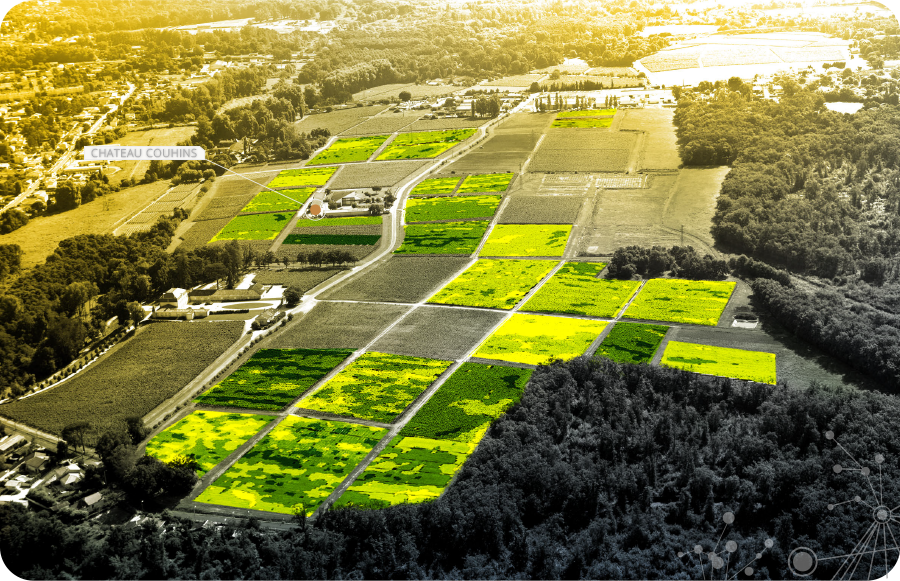
The GreenSeeker, developed at Couhins in 2007, analyses the light reflected by the leaves in red and near infrared frequencies and enables vineyard manager Sébastien Ravilly to calculate the vegetation index (NDVI) which correlates strongly with the vines’ vigour.
Couhins is also known for developing the mating disruption method for grape worms, a parasite that perforates grape berries. The technique confuses the butterflies that produce the worms by diffusing an identical pheromone to that emitted by female butterflies.
Other major areas of research include grape varieties that are resistant to fungal diseases and understanding how rootstocks and grape varieties interact and ‘exchange’ information about plant growth.
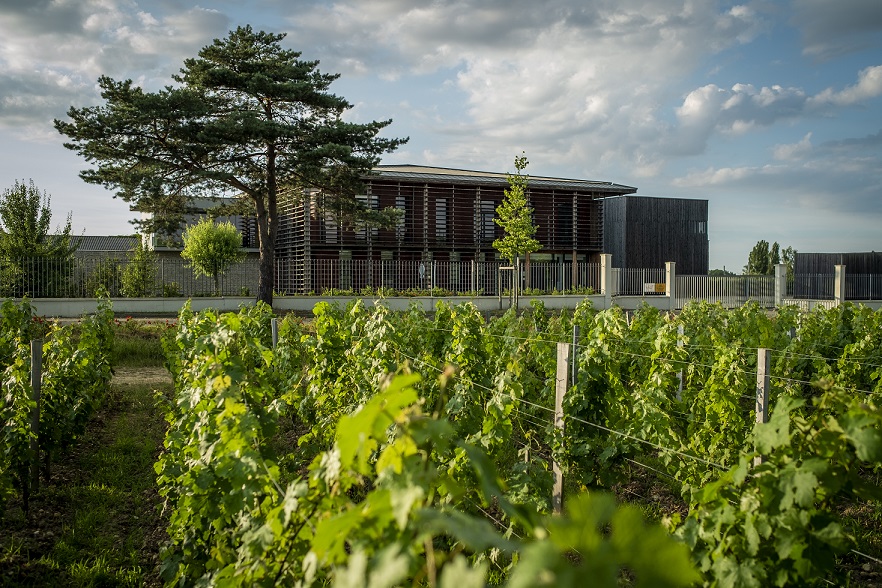
The chateau’s environmental practices include:
- Installing beehives and planting bee-friendly flowers on fallow plots
- Using the Guyot-Poussard pruning method, which respects the sap route on canes and minimises pruning wounds
- Collecting rain and drainage water for washing vineyard equipment and spraying
- Using river water, not drinking water, for new plants (if necessary)
- Using phytosanitary products with low water impact
- Using a confined spraying system to limit the quantity of phytosanitary products and hence the water used to dilute them
- Composting waste (such as stalks, cuttings from pruning and grass from open spaces) and spreading it as fertiliser the following year
- Sowing legumes and cereals in winter to improve the soil
- Tractor drivers trained in eco-driving
- No spraying at the end of the row, and no spraying when the wind exceeds 19km/h
- Using bio-control products where possible
- Saving water by using hot water for cleaning tanks and steam to clean barrels
- Regular inspection and maintenance of water pipes
- Fitting low-consumption lightbulbs, presence sensors instead of switches, and satisfactory natural lighting
- Using inert gases (CO2, nitrogen) for tank filling and pressing the whites, to limit the use of sulphites
- An annual employee awareness programme for sorting and recycling of waste
Château Fourcas Hosten
Brothers Renaud and Laurent Momméja purchased this property, located in the heart of Listrac-Médoc, in 2006.
Renaud told Canopy: “We wanted to write a new page of the history of our family and to find a new challenging project in the wine business.”
Since the purchase, the winery and 18th-century house have been renovated, and 15 of the 47 hectares of vines have been ripped out. Three were sold and the rest are being replanted, after resting for four years, in a programme that will continue until 2025.
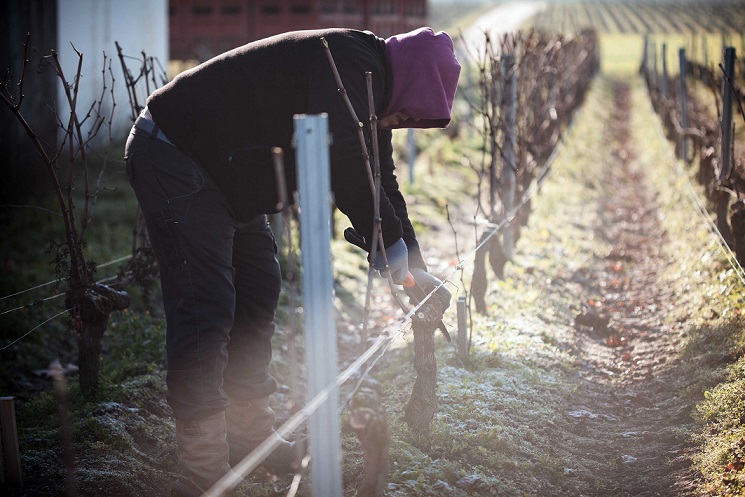
Some of the new vineyards are for white grapes and the density is much higher than for the existing red vines: now 10,000 vines per hectare compared to the previous 8,333.
Organic viticulture has been rolled out across the vineyards, starting with 2.2ha of new white vines in 2012, then 8ha of new red plants in 2014. The whole site became organic this year and they are aiming for certification for the whites in 2020 and reds in 2021. 2018 also saw Fourcas Hosten begin the experimentation with biodynamic farming on 16ha.
“We would like to be 100% biodynamic, but I don’t know when,” Bordeaux-born technical director Caroline Artaud told Canopy. She said moving from organic to biodynamic “will help us to reduce the amount of copper and sulphur”.
The chateau’s environmental practices include:
- Sowing barley in the inter-row on 18ha of Cabernet Sauvignon – to improve the structure of the soil
- Using organic fertilisers, such as OvinAlp and Bochevo
- Tillage on the gravelly Fourcas plateau vineyards, and mowing in Listrac, where the soils are clay and limestone
- Planting of ‘Arbres et Paysages’ hedges along the plots for biodiversity and to prevent spray drift
- Spraying with herbal teas, such as yarrow, stinging nettle, horsetail, camomile
Château de La Dauphine
2015 was a big year for Château de La Dauphine. It’s the year the historic 53ha vineyard, nestled on the slopes of Fronsac, became certified as organic and began biodynamic farming. It’s also the year the latest owners took over. The Labrune family, who made their fortune in the health sector, have restored and modernised La Dauphine, which specialises in Merlot and Cabernet Franc blends.
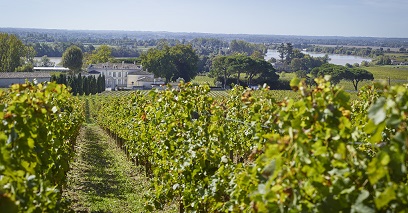
La Dauphine has embraced biodynamic methods, with the help of Claude and Lydia Bourguignon – agricultural engineers known as the ‘earth doctors’. They are also experimenting with ageing their wines in Italian clay amphorae and barrels made by a cooper working according to biodynamic principles.
“The biodynamic approach, with its emphasis on life and everything being inter-related, seemed obvious to us,” vineyard manager Yannick Yaunet said. “Since we have started applying it, we have seen a significant improvement in the soil, the vines, and, of course, in the wine.”
The chateau’s environmental practices include:
- Installing bat roosts as bats like to eat grapevine moths (whose larvae feed on grapes)
- Using natural products to protect the vines and enrich the soil
- Making the preparations according to the lunar calendar, in order to respect the natural rhythm of the growth cycle
- Light ploughing of soil under the vines and grassing between the rows
- Leaf removal on the side that the sun rises
- Using copper buckets
- Promoting a ‘green tour’ which explains the property’s ethical and environmental initiatives, including the work in the vineyard and the role of the beehives, biodynamic workshop (below), aquaponics, the permaculture vegetable garden and the scented garden. The €12 tour finishes with a tasting of three wines, plus some honey and Merlot jam, in a green ‘cocoon’ in the middle of the park.
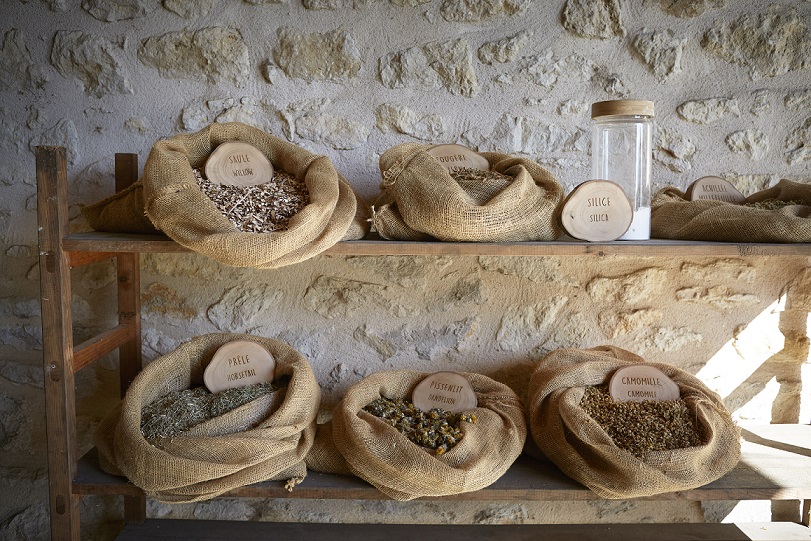
Marion Merker, the chateau’s wine tourism manager, says: “Our objective is that every visitor enjoys a unique experience in a friendly, relaxed atmosphere, that they can ask whatever questions they like, that La Dauphine is one of the highlights of their trip, and that when they leave, they feel like they have discovered a treasure, for which they will become an ambassador.”


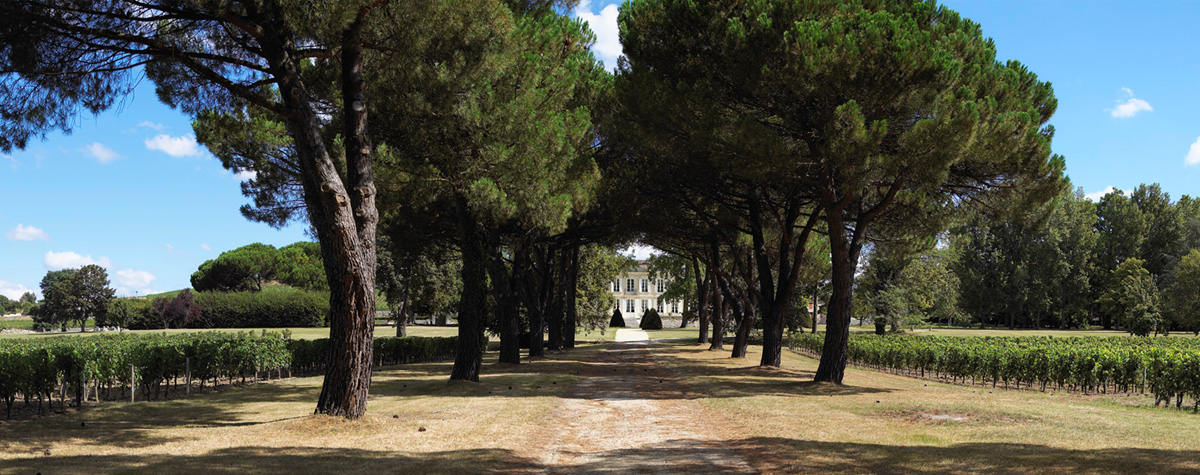










.png)






